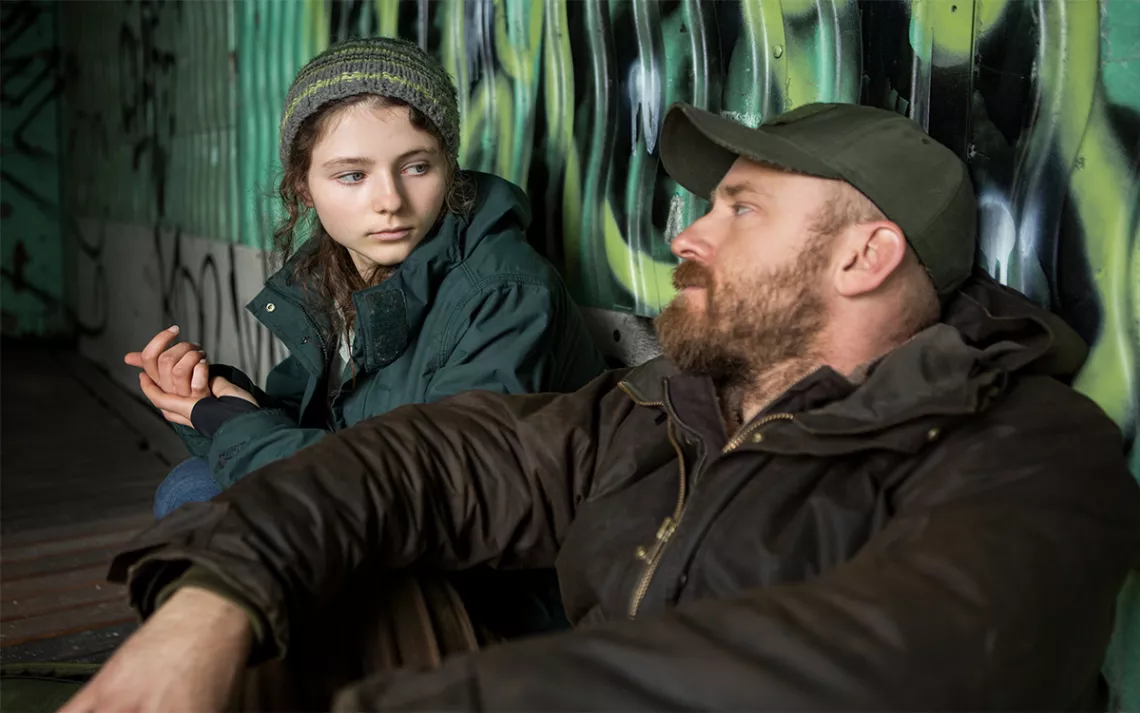“Leave No Trace” Has No Villains, Just Complicated Human Beings
Debra Granik’s latest film explores love, nature, and the wounds of war

Photo courtesy of Bleeker Street
Early on in Leave No Trace, the just-released film directed by Debra Granik, a young teenager named Tom and her father, Will, are shopping in a grocery store. Tom holds up a chocolate bar and asks, “Need or want?” Will eyes the bar and answers, “Both.”
When Ben Foster, who plays Will, read the script, the moment stuck with him.
“I brought [the script] back to Debra and said, ‘Let's go over every single line—does Will need to say it, or does he want to?’” Foster told Sierra by phone. “If he wanted to say it and didn’t need to, we crossed it out and let the behavior speak for itself.”
The result is a storyline pared down to its essentials, with stretches of silence that say more than words ever could.
At the movie’s start, Will and Tom, who is played by Thomasin Harcourt McKenzie, are living undetected by authorities within the 5,200 acres of Forest Park on the edge of Portland. A veteran of an unnamed war, Will suffers from post-traumatic stress disorder, but in the quiet solitude of the forest, and the extreme simplicity of their existence in nature, he is able to manage his symptoms. Despite falling outside societal norms, the life they lead is relatively stable, even predictable.
The two play chess under a worn tarp that they patch with duct tape when it rains. They forage for food and firewood and tend a small vegetable garden. To educate Tom, Will has her read volumes of an encyclopedia. Together they make occasional trips into the city to buy supplies.
The film is adapted from the 2010 novel My Abandonment, by Peter Rock, which is loosely based on the real-life story of a father and daughter who lived for a time in Forest Park. In preparation for the film, Foster and Harcourt McKenzie trained with a primitive skills teacher, and Foster worked with a military expert on escape and evasion techniques.
Granik made clear from the beginning that the film has no villains, Foster says, and Will is sympathetic as a devoted, if troubled, father. Among the towering trees of the Pacific Northwest, he achieves a tentative equilibrium that allows him to be emotionally present for his daughter; without the many distractions of modern life, the two are deeply tuned into one another. When Will has nightmares, Tom wakes up and comforts him.
But this situation comes to an abrupt end when Will and Tom are discovered and whisked away from their camp and each other by the police. The social workers who step in to manage their case aren’t villains either, and they quickly assess that Will and Tom will be better off if they can stay together. The two are eventually housed on a farm in rural Oregon, and Will is given a job on a tree plantation.
It’s jarring to see Will cutting down trees after living peacefully among them, and the racket of chainsaws and helicopters transporting bundles of felled pines feels torturous. Viewers watch as Will crouches behind a tree and rubs his head as if in pain. It’s only a matter of time before Will and Tom pack up early one morning and flee.
But things are different this time around. During her brief stay on the farm, Tom has accumulated some possessions, made at least one friend, and learned to ride a bike. While the thought of starting school terrifies her, it also offers the tantalizing possibility of less social isolation.
“Did you even try?” she asks her dad. “Because I can't tell.”
Nevertheless, Tom accompanies Will as they make their way north, deep into the forests of Washington State. This sojourn into nature is less idyllic than the first. On the run, they are not as prepared for the elements. The temperature dips below freezing, and the trees themselves seem darker and more ominous than the vibrant green of Portland’s Forest Park. The forces driving Will seem darker, too, the constant flight more senseless, as he endangers both himself and his daughter.
In constructing Will’s character, Foster and Granik dove deep into PTSD, sharing articles, videos, and stories of friends who are veterans. The script was also informed by Granik’s 2014 documentary Stray Dog, which chronicles a Vietnam vet contending with the demons of his past. The result is an unflinching portrayal of the psychological wounds of war and the limitations of love in healing those wounds.
Without any villains, Leave No Trace relies on its many unsettling contradictions to provide dramatic tension: By making a place for Tom in his world, Will has provided her with meaningful connection and caused profound isolation. Nature in this film is both a balm to Will’s pain and a hazard that exacerbates his alienation. For Tom, integration with society offers satisfying social ties but also threatens to inundate her and her father with material things that alienate them from each other.
Ultimately, Leave No Trace is just as much a coming-of-age story as it is an exploration of the wounds of war. Gradually, Tom realizes that her wants and needs are not the same as her father’s and that if she wants to thrive, she will have to find the courage to live her own life.
 The Magazine of The Sierra Club
The Magazine of The Sierra Club



